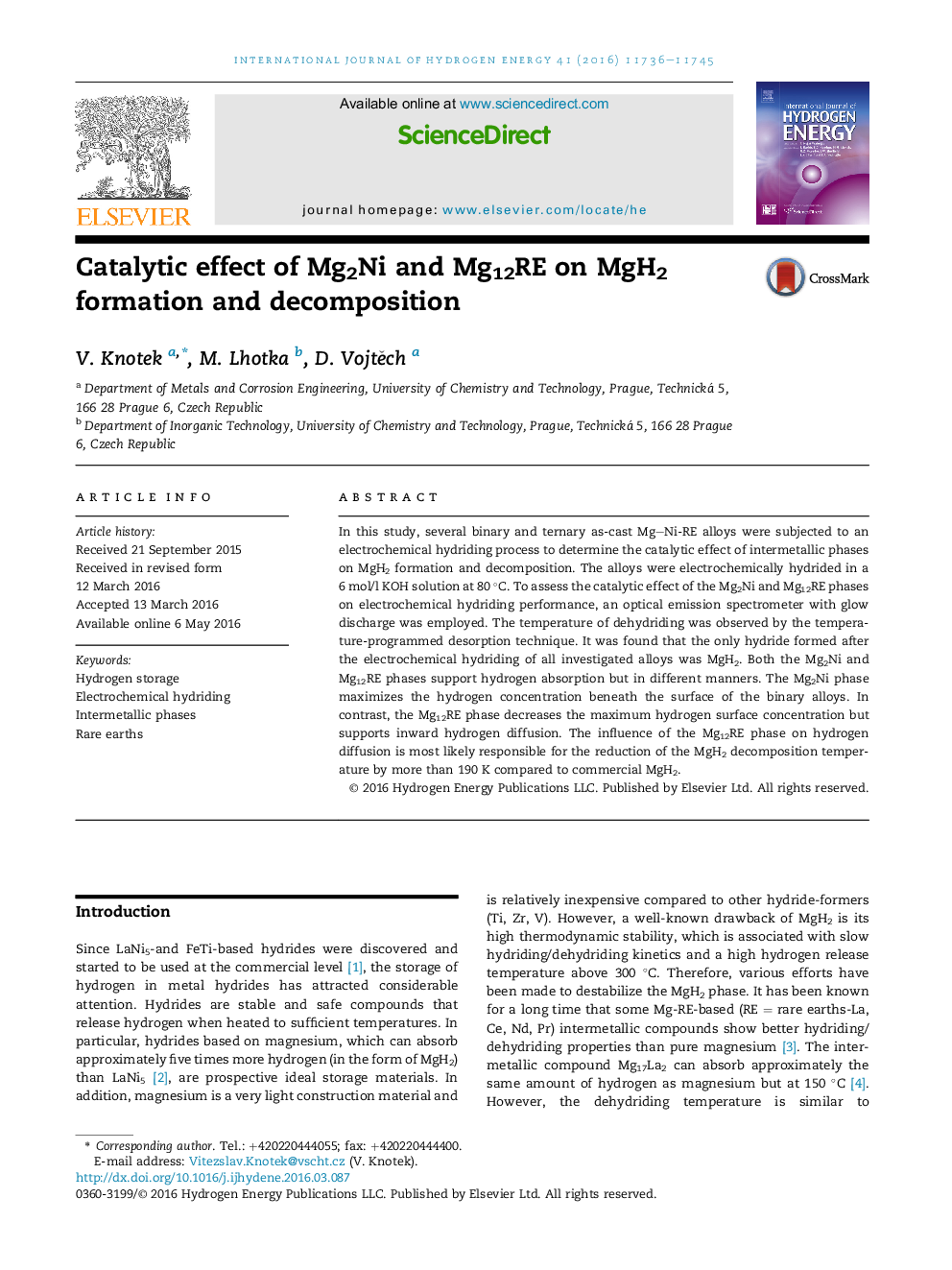| Article ID | Journal | Published Year | Pages | File Type |
|---|---|---|---|---|
| 1268505 | International Journal of Hydrogen Energy | 2016 | 10 Pages |
•Mg12RE and Mg2Ni phases support the absorption of hydrogen in different manner.•Catalytic effect of Mg12RE phase consists in the acceleration of hydrogen diffusion.•Mg12RE phase decreases dehydriding temperature for Mg–Ni-based alloys.
In this study, several binary and ternary as-cast Mg–Ni-RE alloys were subjected to an electrochemical hydriding process to determine the catalytic effect of intermetallic phases on MgH2 formation and decomposition. The alloys were electrochemically hydrided in a 6 mol/l KOH solution at 80 °C. To assess the catalytic effect of the Mg2Ni and Mg12RE phases on electrochemical hydriding performance, an optical emission spectrometer with glow discharge was employed. The temperature of dehydriding was observed by the temperature-programmed desorption technique. It was found that the only hydride formed after the electrochemical hydriding of all investigated alloys was MgH2. Both the Mg2Ni and Mg12RE phases support hydrogen absorption but in different manners. The Mg2Ni phase maximizes the hydrogen concentration beneath the surface of the binary alloys. In contrast, the Mg12RE phase decreases the maximum hydrogen surface concentration but supports inward hydrogen diffusion. The influence of the Mg12RE phase on hydrogen diffusion is most likely responsible for the reduction of the MgH2 decomposition temperature by more than 190 K compared to commercial MgH2.
